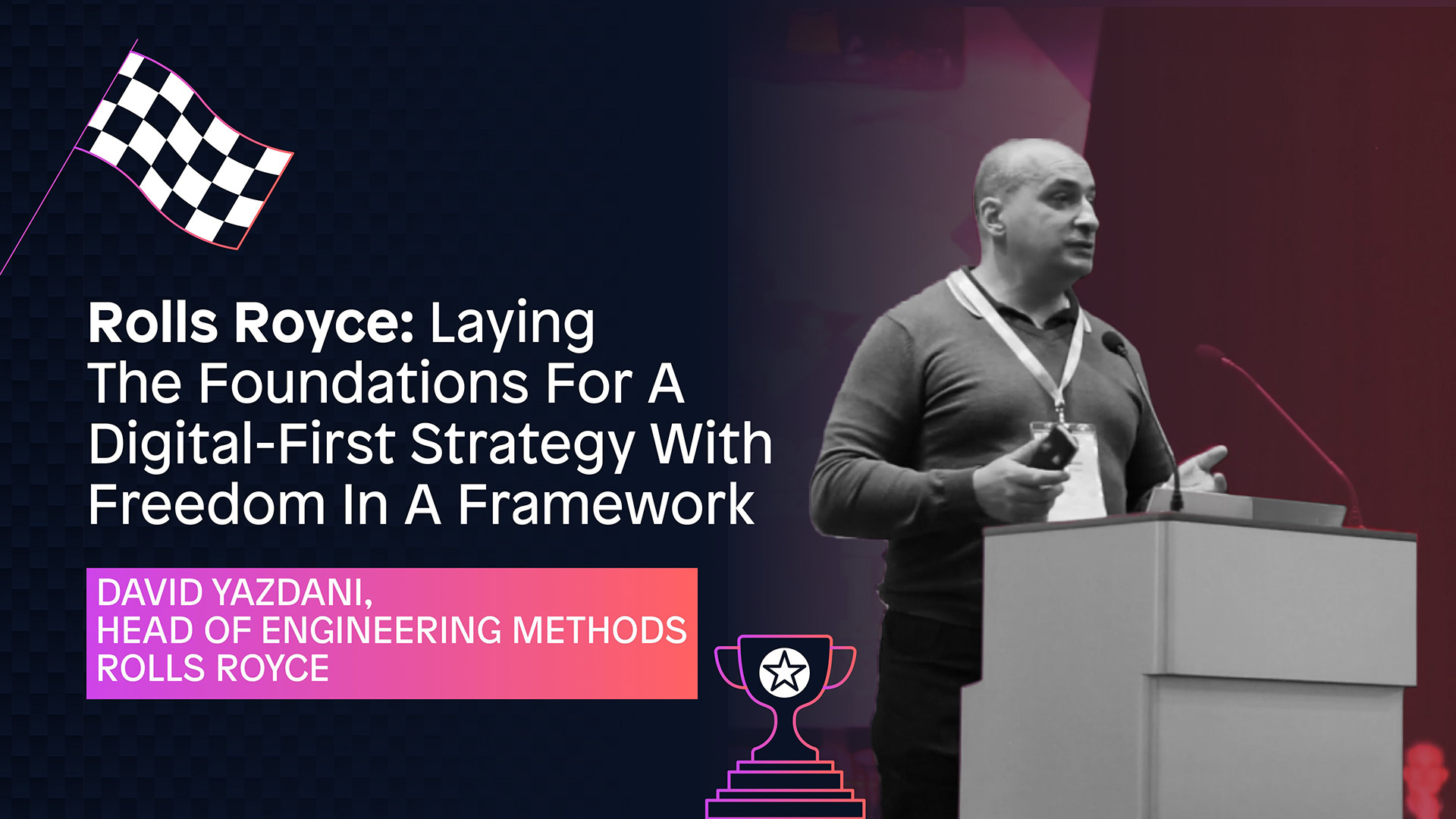
Delivering Connected Digital Solutions with Rolls Royce

Delivering complex machinery to power global transportation requires the support of sophisticated and modern software. To bring cutting-edge products to their customers safely and efficiently, power system provider, Rolls Royce, is on a journey to modernize their software development ecosystem.
At the Mendix UK Manufacturing Forum, Head of Engineering Methods for Rolls Royce, David Yazdani, details the IT challenges which led his team to adopt low-code.
Like many manufacturers, Rolls Royce is now looking to the next generation of tools – 3D and 4D visualization, connected CAD (computer-aided design) and CFD (computational fluid dynamics) practices, and consistent user interfaces – to streamline product development, manufacturing and in service support across the supply chain.
Creating a Digital Thread
Delivering a power system such as a gas turbine to a customer doesn’t just end with the physical product at the point of sale – a massive amount of data follows a piece of machinery from its initial creation through to its daily use.
“We have a completely end-to-end process and toolset. We go from talking to customers to capturing their needs into requirements documents… [to] modeling on CAD, and controlling product structures in a PLM instance… We write machining programs to mill the parts, control how foundries work, and how parts are hot formed in dies to make fan blades,” said Yazdani.
“When we give it to the customer, we’re responsible for it for 50 years. So, we have a complete understanding of what our customers are doing with our products. We have edge computing – every engine has sensors on it and streams data back to us. We use that data with them to optimize the way they use the asset. We can tell if a pilot’s not being gentle enough, if an airline is using the wrong kind of fuel, or if it’s flying too many cycles,” he continued.
“But, building that has taken us 30 years… It’s incredibly hard to deliver an integrated environment and maintain it when the technology basis that its built with and the technology it’s being applied to is radically transforming,” he continued. The Rolls Royce IT group has faced common challenges in that maintenance in recent years:
- Legacy systems developed over the last three decades, many of which were coded by engineers in different departments – meaning they were written, documented, and released inconsistently.
- An increase in Excel-based shadow IT solutions. Connecting SAP or ERP tools can be a challenge, so engineers will start to rely on Excel and Visual Basic to automate spreadsheets and transactions in lieu of relying on the enterprise systems.
- Complex infrastructure requirements, as the immense pools of manufacturing data within Rolls Royce have varied requirements for management and storage based on the customer or part.
“Full of all sorts of factors and people bridging gaps and hoping they’re doing it the right way,” Yazdani summarized.
To deliver systems which are modern, connected, and flexible at a pace that is acceptable for the business and customers – Yazdani and his team have adopted low-code as part of the solution, including the Mendix platform in 2021.
Modern Software for Modern Manufacturing
Rolls Royce is in the early stages of their low-code journey, but already have their sights set on high-value implementations. “We are [starting to use Mendix] for projects like managing data sets with safety and security. We’re doing it for some incredible stuff like automating system design for jet engines, which is a holy grail in terms of improving product development, time scales, performance, and productivity,” Yazdani outlined.
Collaboration, internally and externally, will be critical to achieving speed and scale, but will also require a high level of governance.
“We need to enable far more of our employees and my colleagues [in IT] to safely construct toolkits without me having to worry about how they do it, or having to do it for them,” Yazdani said.
Within the parameters of governed low-code development, Yazdani hopes to mobilize other technically-minded individuals outside of IT to become citizen developers. “We want our engineers to feel comfortable about being citizen coders, because we’ve always been quite comfortable with that idea, just not quite able to fully let go and let them have the freedom to do it without too much supervision.”
Yazdani sees the collaborative elements of Mendix stretching outside of the walls of Rolls Royce, too. For instance, they often work with smaller suppliers to buy certain parts for a project, but can only share a limited amount without the risk of exposing any IP on either side.
“Wouldn’t it be nice if there was an app store where businesses enter a marketplace that offers the ability to make parts, construct tools to capture and share data that they’re creating in the factory, but then share the data collected about those parts they’re making for me without giving away anyone else’s secrets?”
Of their future with low-code, Yazdani summarized his vision: “I need to equip our employees with the ability to write software that’s compliant, and it’s quite hard when you don’t have enough developers and a sufficient environment for them to work in. If they don’t know why they’re doing it, because the information between the customer and supplier systems are tangled, we need to sort this out.”
“We can’t create software fast enough with how we want this picture to evolve, and if we can’t do that, we can’t deliver what our customers expect.”